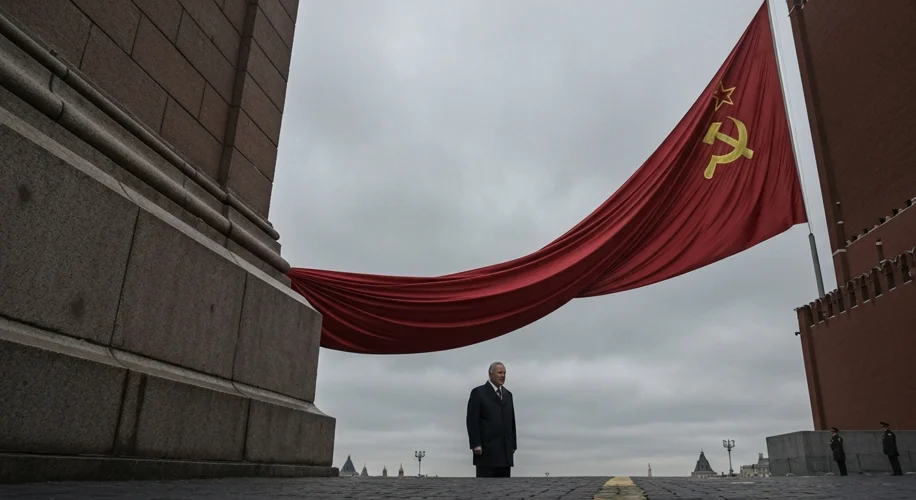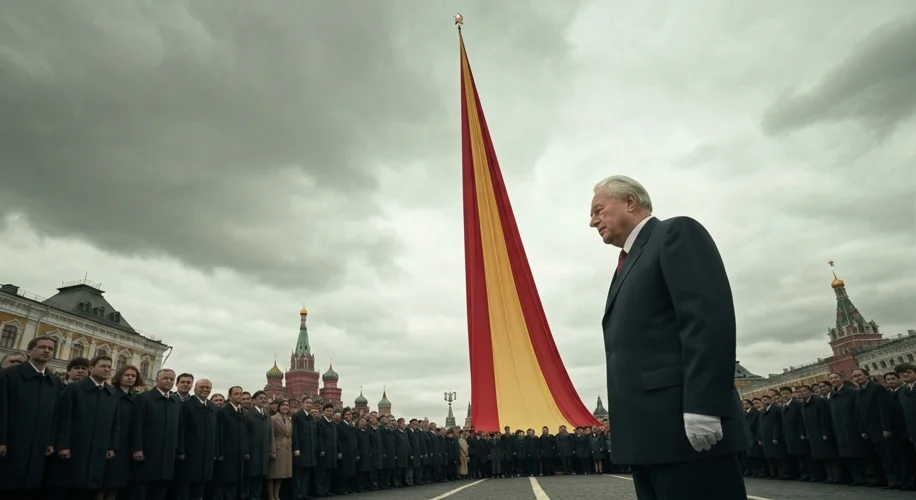The year is 1991. For decades, the world held its breath, balanced precariously on the edge of a bipolar abyss. On one side, the United States, a beacon of capitalism and democracy; on the other, the Soviet Union, a colossus of communism, its red star emblazoned across the chests of millions. But as the calendar pages turned, that formidable red star began to flicker. The Soviet Union, a vast empire forged in revolution and cemented by ideology, was not just crumbling; it was dissolving, piece by agonizing piece.
For 70 years, the USSR had been a dominant force, a geopolitical titan that had reshaped the post-World War II world. Its creation, a mosaic of fifteen republics, was a grand, and ultimately flawed, experiment in centralized power. Imagine a single hand attempting to control the vast, diverse energies of Moscow, Kyiv, Tashkent, and Tbilisi simultaneously – an impossible feat destined for strain and eventual fracture. The very mechanisms designed to maintain unity – a monolithic Communist Party, a centrally planned economy, and a pervasive security apparatus – paradoxically sowed the seeds of its own destruction.
The culture of the Soviet Union was one of stark contrasts. On the surface, there was the triumphant propaganda of a workers’ paradise, the grand parades, the space race achievements that captured global imagination. Yet, beneath this veneer, dissent simmered. Artists chafed under censorship, intellectuals debated forbidden ideas, and ordinary citizens yearned for the freedoms and consumer goods they saw on Western television screens. The economic engine, once fueled by rapid industrialization, began to sputter. By the 1980s, shelves in state-run stores were increasingly bare, and the quality of life, compared to the West, became a stark and undeniable reality for many.
Into this environment stepped Mikhail Gorbachev. Ascending to power in 1985, he inherited a system riddled with stagnation and apathy. Gorbachev, a man who believed in the ideals of socialism but recognized the rot within its structure, launched an ambitious reform agenda. His policies of Glasnost (openness) and Perestroika (restructuring) were intended to revitalize the Soviet Union, not dismantle it. Glasnost lifted the lid on decades of pent-up grievances, allowing for public criticism and a flood of previously suppressed information. Perestroika aimed to inject market mechanisms into the command economy, a move that proved both necessary and destabilizing.

The consequences of Glasnost were immediate and profound. The genie of free expression could not be put back in the bottle. Republics that had long chafed under Moscow’s rule began to assert their national identities. Lithuania, Latvia, and Estonia, forcibly annexed decades earlier, were among the first to declare independence, their long-suppressed national aspirations erupting with a force that could no longer be contained. The tremors of dissent spread like wildfire, igniting nationalist fervor across the vast Soviet landscape.
The key actors in this drama were not just Gorbachev and his reformist circle. They included the leaders of the individual republics, men like Boris Yeltsin of Russia, who would soon become a pivotal, albeit controversial, figure. Crucially, they included the millions of ordinary citizens who, emboldened by the new freedoms, took to the streets, demanding change, demanding independence. The perspective of these citizens was shaped by years of scarcity, by the stifled dreams of generations, and by the dawning realization that their own national destinies were within reach.
The climax of this dissolution came on December 26, 1991. After a failed hardline coup attempt in August, which ironically had only accelerated the calls for independence, the Soviet Union was effectively a ghost. On that day, the Supreme Soviet, the nominal parliament of the USSR, voted itself out of existence. The red flag of the Soviet Union was lowered for the final time over the Kremlin, a poignant symbol of an empire’s demise. The Bear, as the USSR was often metaphorically called, had roared its last.
The aftermath was a geopolitical earthquake. The Cold War, the defining conflict of the latter half of the 20th century, was over. The United States stood as the sole superpower. But for the former Soviet republics, the transition was fraught with challenges. New national borders had to be drawn, new economies built from the ruins of central planning, and new national identities forged. The transition was often chaotic, marked by economic hardship, ethnic conflicts, and the rise of new political elites. Russia itself, under Yeltsin, lurched through a tumultuous decade, grappling with its diminished status and internal turmoil.
The collapse of the Soviet Union was not a single event, but a complex process driven by deep-seated economic failures, the irrepressible force of nationalism, and the unintended consequences of Gorbachev’s well-intentioned reforms. It stands as a profound historical lesson: even the most formidable empires, built on seemingly unshakeable foundations, can succumb to the erosive power of internal contradictions and the unyielding human desire for self-determination. The echoes of that momentous dissolution continue to reverberate across the global stage, shaping the world we inhabit today.

